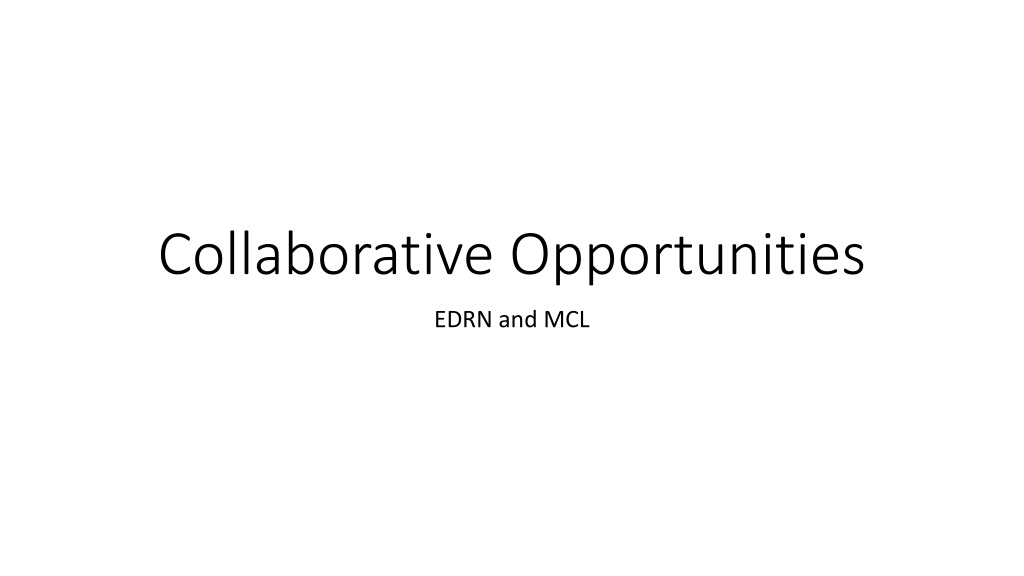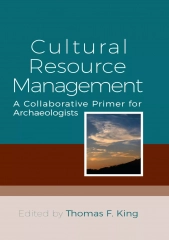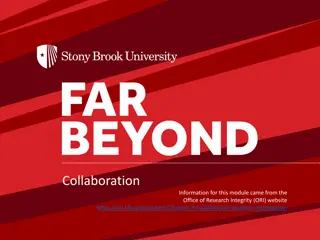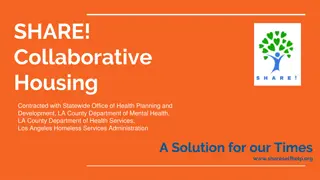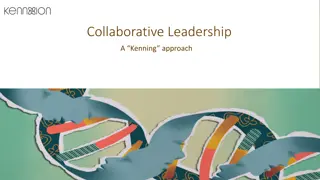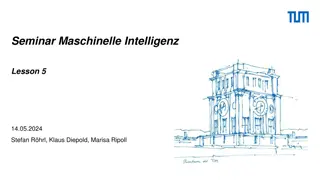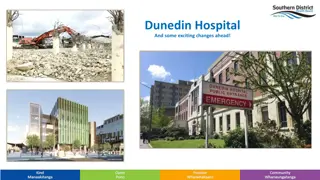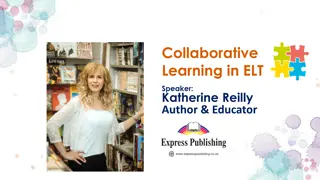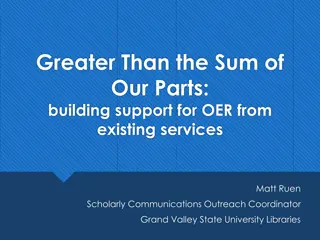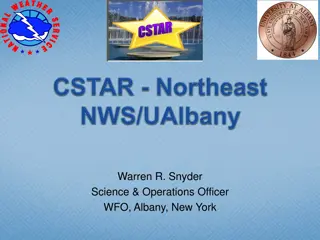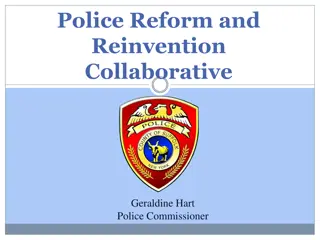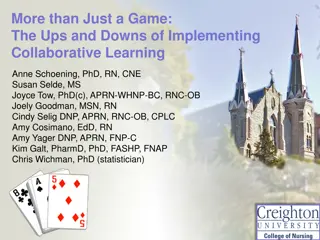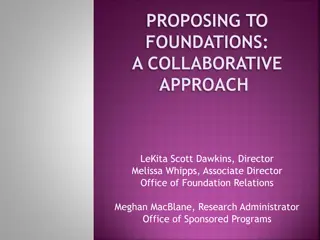Collaborative Opportunities
Tools and methods for characterizing biological expression, intratumor heterogeneity, immune profiling, imaging features, and more in breast cancer. Explore validation trials, survival data, and insights on critical drivers through recursive partitioning models.
Download Presentation

Please find below an Image/Link to download the presentation.
The content on the website is provided AS IS for your information and personal use only. It may not be sold, licensed, or shared on other websites without obtaining consent from the author.If you encounter any issues during the download, it is possible that the publisher has removed the file from their server.
You are allowed to download the files provided on this website for personal or commercial use, subject to the condition that they are used lawfully. All files are the property of their respective owners.
The content on the website is provided AS IS for your information and personal use only. It may not be sold, licensed, or shared on other websites without obtaining consent from the author.
E N D
Presentation Transcript
Collaborative Opportunities EDRN and MCL
Tools for Characterizing Biology Expression profiling (Ultralow risk threshold); Intratumor heterogeneity. Copy number, Immune profiling (via expression arrays, multiplex immunohistochemistry) Imaging features (amorphous vs. linear calcifications, stroma density)
Expression Profiling Expression Profiling- - Ultralow Risk Threshold Ultralow Risk Threshold Validation: STO Validation: STO- -3 Trial, Raster, MINDACT 3 Trial, Raster, MINDACT Van t Veer Nature 2002 Esserman, Shieh BCRT 2013 Van t Veer, Glas BCRT 2017
Breast Cancer Specific Survival of the Transbig Data set: TEST SET
Validation in the STO 3 Trial conducted in Stockholm: postmenopausal women, <3cm, N0 tumors 1976-1991
Randomized to Tamoxifen x 2 years OR No Endocrine Treatment STO-3 trial 1976-1991 Low Risk Breast cancer postmenopausal women Tumors <3cm, N0 Esserman, Yau, Borowsky,Benz, van t Veer, Lindstrom et al in press JAMA Oncology 2017
All Patients by 70 Gene, Ultralow, low ultralow, high Esserman et al JAMA oncology in press 2017
Recursive partitioning can provide insights about biology . . . WHAT ARE THE MOST CRITICAL DRIVERS?
recursive partitioning (tree) models Nonparametric method for: selecting predictors of outcome (variable selection) selecting splitting points (e.g. cut-points in continuous variables) testing (all) interactions Does not rely on assumption of proportional hazards Easy to understand output consists of decision tree rather than hazard ratios General idea of tree models: Allow for the presence of multiple groups self determined by the data Split the data into increasingly homogeneous sub-groups Inference not so well developed
recursive partitioning (tree) models 2 methods available in R rpart - splits predictors to minimize node impurity selects split that makes survival in each branch homogeneous often leads to overfitting so tree must be pruned party - splits predictors based on statistical tests survival in each branch of split is statistically different eliminates need for pruning
Recursive Partitioning (R:PART) in STO3 Tamoxifen Trial based on Recursive Partitioning (R:PART) in STO3 Tamoxifen Trial based on breast cancer specific survival breast cancer specific survival INPUTS EARLY EVENTS MammaPrint risk groups BluePrint Subtypes Tumor Grade Tumor Size (<2, >2) HR and HER2 status Ki67 Esserman, Yau, Borowsky,Benz, van t Veer, Lindstrom et al in press JAMA Oncology 2017
Clinical Impact Clinical? Implica ons? Characteris cs? Not? a? harbinger? of? distant? disease? ? Ini al? Treatment:? Safe? if? less? aggressive? ? Early? detec on:? ? No? benefit? Metasta c? risk? extremely? low? YES? Indolent? Tumor? Harbinger? of? distant? disease? ? Distant? recurrence? ? fatal? ? Ini al? Treatment:? Maximized? and? tailored? to? reduce? recurrence,? (early? vs.? late)? ? Early? detec on:? ? Benefit? NO? Metasta c? risk? moderate/? high?
What is the biology driving Ultra What is the biology driving Ultra- -Low tumors? Low tumors? What are the molecular features of Indolent Breast Cancers? What can we use across other cancer types? Christina Yau, Laura van t Veer, Laura Esserman, Linda Lindstrom
Significant expression differences can be found between MP Ultralow and MP low risk cases even within the HR+HER2-, Luminal A, Ki76-low subset of patients in the STO-3 trial Differential Expression Analysis comparing Low (but not Ultralow) Risk with Ultralow Risk Risk assignment by MP Nominal enrichment in processes relating to DNA packaging, intracellular transport and second- messenger mediated signaling UNIQUE TO ORGAN TYPE OR COMMON AMONGST TUMORS ACROSS ORGANS OF ORIGIN?
Common Nomenclature for Lesions that are not life threatening Early detection will make more difference if you can eliminate the ultralows at time of diagnosis Are we ready to Ultralows need to be demoted from cancer status (like Pluto) What is common across cancers and how can we learn across the groups? Common features of ultralow risk disease ( x of 6" Tumor Gene expression: DNA packaging genes? (UC Breast team) Immune environment? (MCL consortium) Radiomics features (Denny, Gillies, others) Exosome in the Urine (Semmes) Exosomes in the plasma (Paulovich) Methylation markers (Herman) IDLE classification)
Highest Risk cancers May grow too quickly or spread too early to benefit from serial screening Goal should be identifying risk factors Establish high risk cohorts (e.g.WISDOM, xxx, xxx) Develop and validate Markers of risk for most consequential (aggressive) cancers Markers of failure to repair DNA (Anderson) Circulating inflammatory markers ?Microbiome Autoanbiobies (Anderson) Focus on prevention Especially important for cancers that can be cured with immuno-oncology combinations earlier in disease course (neoadjuvant)
Cohorts with serum at NCI Frederick Consider acquiring the associated blocks and characterizing the tumors as ultralow, late recurrence risk, and early recurrence EDRN Cohort 1 (screen detected) EDRN Cohort 2 (diagnostic) CPTAC collection 1500 cases from 4 sites
Integrate Measures of Overdiagnosis, Harm into Screening/Biomarker Studies at Inception Model the potential harms as well as benefits Establish thresholds for SPECIFICITY below which interventions cause more harm than good Educate the public, clinicians about the need to study cohorts, find risk factors, but avoid intervention unless certain conditions are met All prospective studies should include measures of overdiagnosis, molecular profiling, tumor immune environment
